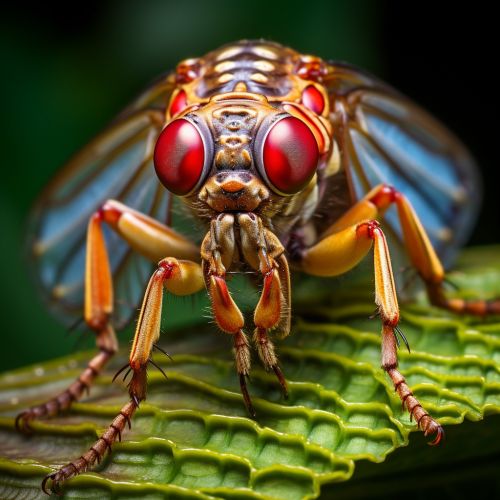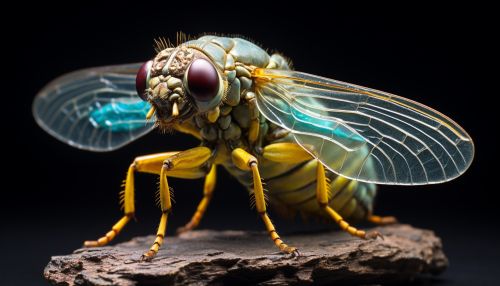Tymbal (insect anatomy)
Introduction
The tymbal is a specialized part of the anatomy of certain insects, most notably cicadas, that is used to produce sound. This sound-producing organ is typically found in the exoskeleton of the insect and is used primarily for communication, particularly for mating calls. The tymbal is a complex structure that involves a series of ribs and muscles that work together to create a variety of sounds.


Anatomy and Structure
The tymbal is located on the abdomen of the insect, usually on the first abdominal segment. It is a thin, circular, and flexible area of the exoskeleton that is controlled by a pair of large muscles. These muscles, known as the tymbal muscles, are attached to the inner surface of the tymbal and can cause it to buckle inwards and outwards when contracted and relaxed respectively. This rapid buckling and relaxing produces the characteristic sound of the insect.
The structure of the tymbal varies among different species of insects. In cicadas, the tymbal consists of a series of ribs, or corrugations, that run radially from the center of the organ. These ribs are flexible and can be bent inwards and outwards by the action of the tymbal muscles. When the muscles contract, the ribs buckle inwards, producing a click sound. When the muscles relax, the ribs return to their original position, producing another click. By rapidly contracting and relaxing the tymbal muscles, the insect can produce a series of clicks that form a characteristic call.
Function and Use
The primary function of the tymbal is to produce sound for communication. The most common use of this sound is for mating calls. Male insects use their tymbals to produce a characteristic call that attracts females of the same species. The specific sound produced by the tymbal varies among different species and is often used as a means of species identification.
In addition to mating calls, some insects also use their tymbals to produce alarm calls. These calls are typically louder and more erratic than mating calls and are used to warn other members of the same species of potential danger. Some species of cicadas, for example, produce a high-pitched alarm call when threatened by a predator.
Mechanism of Sound Production
The sound produced by the tymbal is a result of the rapid buckling and relaxing of the tymbal ribs. When the tymbal muscles contract, they cause the ribs to buckle inwards, producing a click sound. When the muscles relax, the ribs return to their original position, producing another click. By rapidly contracting and relaxing the tymbal muscles, the insect can produce a series of clicks that form a characteristic call.
The frequency and volume of the sound produced by the tymbal can be controlled by the insect. By varying the speed and intensity of the muscle contractions, the insect can produce different sounds. The frequency of the sound, or the number of clicks per second, is determined by the speed of the muscle contractions. The volume of the sound, or the loudness of the clicks, is determined by the intensity of the muscle contractions.
Evolution and Adaptation
The tymbal is a unique adaptation that has evolved in certain insects for the purpose of sound production. It is believed that the tymbal evolved from a simple area of the exoskeleton that was controlled by muscles. Over time, this area became more specialized and developed into the complex structure that is the tymbal.
The evolution of the tymbal has allowed insects to communicate in a way that is not possible for many other animals. The ability to produce sound has given these insects an advantage in finding mates and warning others of danger. The specific sound produced by the tymbal is often unique to each species, allowing insects to identify members of their own species and avoid others.
